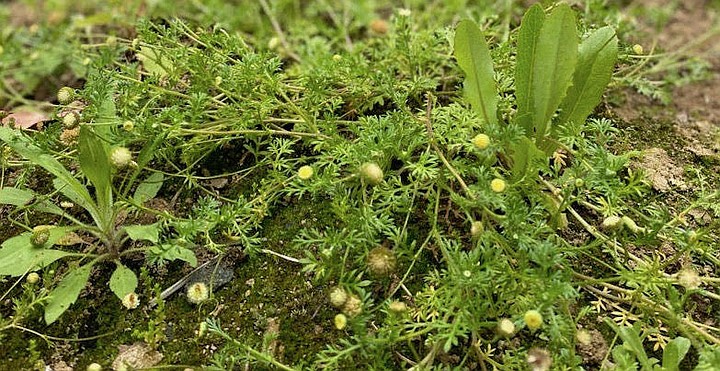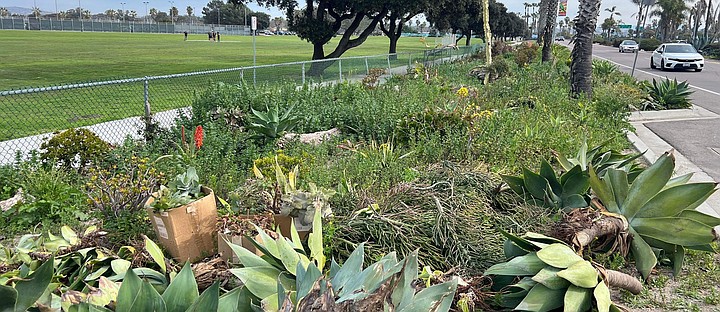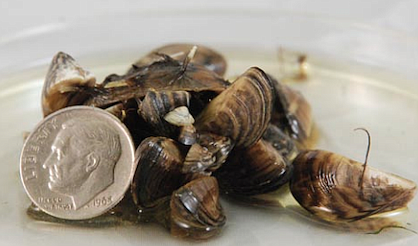After San Diego floods come the worst
Rodents, mussels, and unwanted plants invade
The aftermath of the recent storms and floods is still festering within our countywide ecosystem; it will be part of the county's estimated $14 million mitigation of risks related to invasive agricultural pests and diseases.
"We have yellow-blossomed weeds taking over, and I'm hearing bullfrogs nearby my house," said Ian Smith in a recent interview. "And it's because of the heavy rains we had recently. It's never been this bad."

Smith, a part-time fisherman, lives just north of Market by some houses destroyed by the recent flood waters.
The bullfrogs he hears are part of the "Invasive Species Surge as a Result of Winter/ Spring Storms" list on the California Governor's Office of Emergency Services site. American bullfrogs have hefty appetites and eat bats, birds, lizards, rodents — and other frogs, including the endangered California red-legged frog and the mountain yellow-legged frog. The bullfrogs "also carry a fatal fungus that can cause the decline of native amphibian populations." The recent floodwaters created standing water pockets by vegetation, making a perfect storm for bullfrog breeding.

Smith's home wasn't flooded, but he witnessed nearby overflowing culverts on social media due to clogged storm drains where the floodwaters moved cars — and boats on trailers. "Some areas in town will have more [Zebra and Quagga] mussels which stick onto boats," he added. "And if they get into the engines or the propellors, they can ruin a boat."

The invasive Quagga/Zebra mussels, with light and dark stripes on their shells and measuring about 1-2 inches, could have been transported to other freshwater areas around town. The mussel clusters are "highly destructive in freshwater systems because they can reproduce quickly and in very large numbers, up to 1 million larvae per spawning season," says the National Park Service government site in part. They can "Threaten the state’s water treatment plants, hydroelectric plants, and reservoirs and clog municipal water intake structures and obstruct the flow of drinking water," which costs San Diego taxpayers millions of dollars to fix damaged water transport facilities and pipes.

Nutrias, brown-colored aquatic rodents that kind of look like beavers, spawn when San Diego County floods. The nutrias are part of the Office of Emergency Services list mentioned above, as "their burrowing activities frequently cause water-retention or flood control levees to breach, weaken structural foundations and erode riverbanks. Because they consume an immense amount of vegetation, they also cause damage to California’s native plant community and soil structure."
Giant Reed is an invasive bamboo-like grass that surges during heavy rains. The grass has stems that grow upwards to 30 feet tall and are found along stream banks, drainages, and irrigation waterways. Sometimes, they block waterways. But are more of a threat when they dry up during summer and fire hazards.
Linda Pennington knows the Giant Reeds well as she ran San Diego Canyonlands, a non-profit that protects and restores San Diego County canyons and creeks. Her members would gather thousands of pounds of dried reeds, weed and brush, and debris left by homeless and haul it all away to lessen the chances of a fire in their City Heights canyons.
Recently, though, at Pepper Canyon, a small canyon in City Heights between Poplar Street and Pepper Drive "did fill to the top due to growing vegetation clogging the small drainage and the next-door neighbor’s basement flooded."
Weeds — invasive and local — sprouted up all over San Diego after the recent storms.
On February 24, Tony Cohen and his buddies of the OB Beautification Initiative rendezvoused at Robb Field to weed the area where they planted about 5000 plants in 2023 — including succulents, aloe, agave cacti and plumerias. And because of the recent storms, "we took nearly 1000 lbs. of weight out of one section yesterday," he said to me in a recent interview.